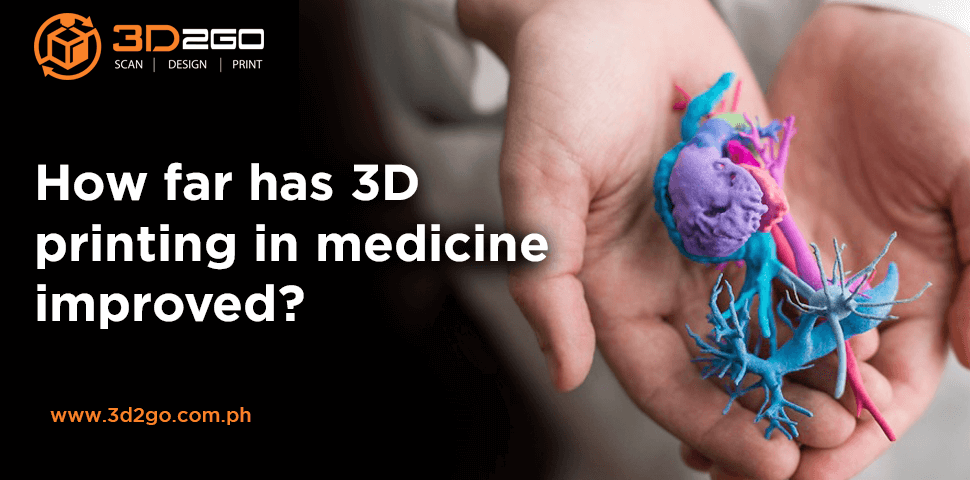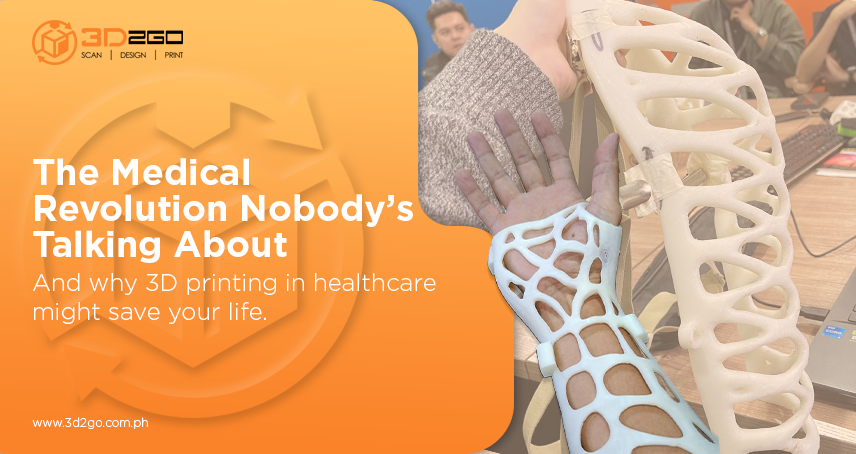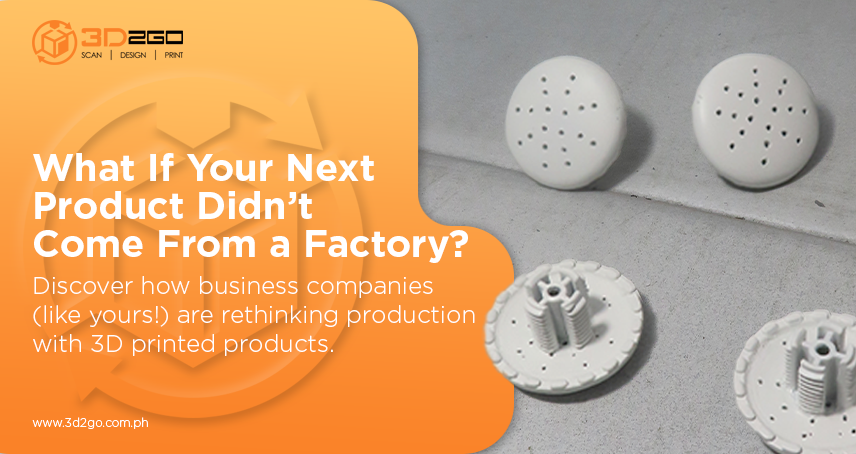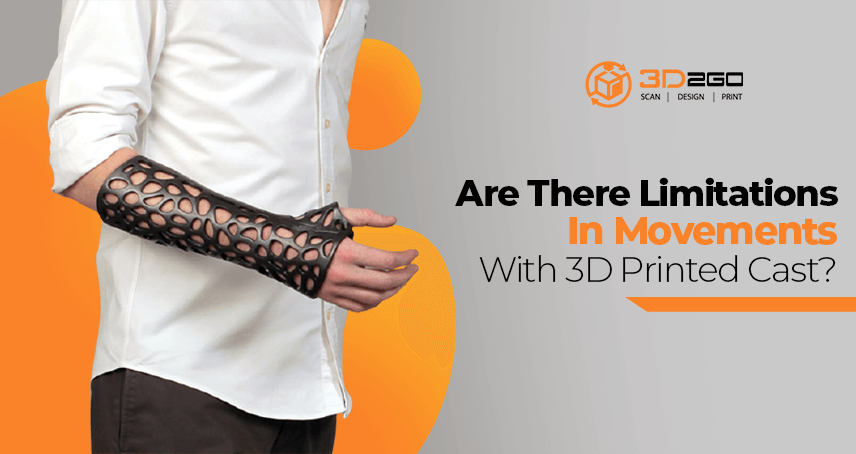
22 Valentine Gift Ideas for Her
July 7, 2022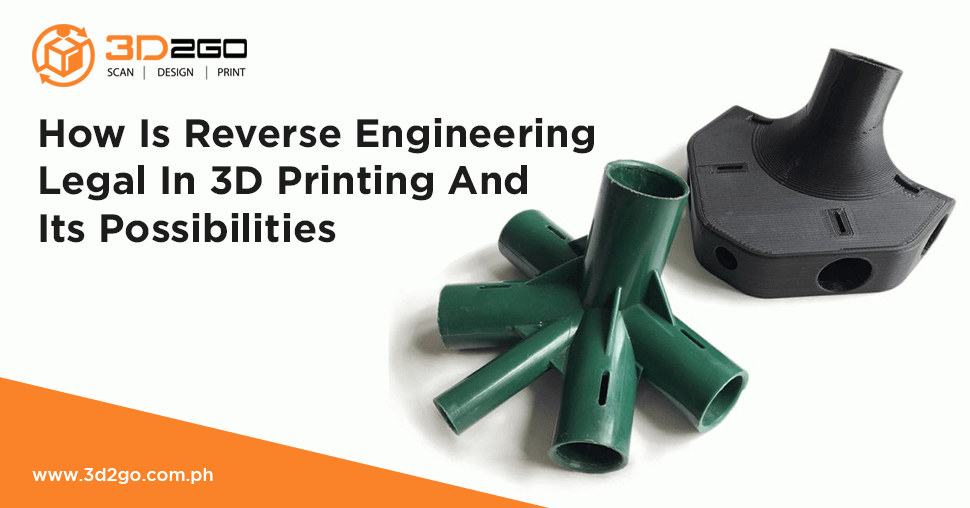
How Is Reverse Engineering Legal In 3D Printing And Its Possibilities
July 7, 2022What Are The Ideal Printers For 3D Printing in Medicine?
3D technology for medical applications means an array of medical device components can be produced massively in a cost-effective way.
Furthermore, the material’s flexibility allows for faster prototyping, more tailored, customized designs, and a wider choice of materials. This is in comparison to other production methods like injection moulding.
But it is important to understand that 3D printing technology is still very much in the early stages for the healthcare industry. There are still issues that need to be addressed in 3D-printed devices that can become a common piece in the healthcare industry.
With further studies though, the industry will no doubt look very different in 10 or 15 years’ time. 3D printing will likely be the key to medical equipment innovation.
3D Printers For Hospice Practice
To be considered a piece of innovative medical equipment, one has to know what type of 3D printer is the most applicable. This is because each of the custom 3D reproductions will have different requirements.
All 3D printing processes have their own advantages and disadvantages when it comes to the materials used. But aside from the materials, you should also know how the layers are supposed to be bonded in the finished product.
With all of these considerations, 3D2GO has listed the three best printers for medical types of equipment.
Selective Laser Sintering (SLS)
An SLS printer uses materials such as wax, polycarbonate, nylon – standard nylon, fine nylon, fine nylon medical-grade, and nylon composite – and acrylic. These are all commercially available, and are often used.
Laser sintering can be used to create metal, plastic, and ceramic objects.
Furthermore, SLS is capable of printing extensive and detailed control over the architecture of objects. Therefore it is increasingly used in the biomedical engineering field.
Thermal Inkjet Printing (TIJ)
With the use of TIJ printers, there are further advances in organ and tissue bioprinting. It helps in the human organ donor shortage which is one of the most critical issues in the world.
Engineered tissues also serve as a better physiological replica for understanding basic biology.
TIJ printers are particularly promising for tissue engineering and regenerative medicine because of their digital precision, control, versatility, and benign effect on mammalian cells.
Moreso, this technology is used to print simple 2D and 3D tissues and organs (bioprinting). It may also prove ideal for other uses like drug delivery and gene transfection during tissue construction.
Fused Deposition Modeling (FDM)
FDM printers are much more common and inexpensive compared to SLS. These printers use printheads that are quite similar to inkjet printers. But instead of ink, beads of heated plastic are released.
The printed models from this printer are used in early concept development and prototyping for medical device design. In fact, the printed parts are usually made from the same thermoplastics that are also used in traditional injection molding or machining. As a result, they have similar stability, durability, and mechanical properties.
Additionally, if the designs are more complex, the FDM printer may have enhanced features like having multiple printheads.
Bioprinting 3D Models
Medical printing usually revolves around biomaterials and prosthetic body parts and not just the usual medical equipment you are thinking of.
Further advance of 3D printing technology involves printing the following:
1. Blood vessels
Harvard University researchers were able to use a custom-built 3D printer and a dissolving ink that created a swatch of tissue. These tissues contained skin cells interwoven with structural material. This can result in having a potentially functioning blood vessel in the future.
Korean engineers were also able to print an implantable blood vessel that they have experimented on rats. The process is expected to develop functioning artificial blood vessels for cardiovascular diseases.
2. Bones
Through bioprinting, 3D printers are allowed to secure chemicals to a ceramic powder creating intricate ceramic scaffolds. This process results in promoting the growth of the bone in any needed shape. Hip and knee replacements also last longer because of the body-friendly calcium phosphate-based coating for the implant materials.
Some researchers have gone ahead and used sea coral or graphene and ceramics to create bone-like structures to 3D print.
According to one of our clients, ‘”we were able to create new bone tissue during surgery exactly where it is needed.”
3. Heart valve
There have been successful cases in 3D printing a heart valve.
Jonathan Butcher of Cornell University has done so. His 3D printed heart valve possesses the same anatomical architecture as the original valve. Butcher used a combination of cells and biomaterials. Thus, he was able to control the valve’s stiffness.
4. Replicating human ears/noses
3D photos of human ears were used as a basis to create molds. These were then filled with a gel that contains bovine cartilage cells suspended in collagen.
The molds held the shape of the ear while cells grew their extracellular matrix. As a result, a replica of a human ear was created.
A similar process can be done for synthetic noses to treat skin cancer patients.
The printing used donated and real human nose cartilage cells who have undergone nose jobs.
5. Synthetic skin
University of Madrid researchers have developed a prototype of a 3D printer that can create synthetic skin.This is a very significant step forward especially for skin grafts and burn victims.
But the 3D printed skin can also be used for further research and testing of cosmetic, chemical, and pharmaceutical products.
6. Synthetic organs
3D-printed organs are not limited to an implantable machine of human organs. It could also mean bioprinted tissues. An example is patient-specific heart tissue printing.
Bioprinted organs can be used to replace animal models for analyzing the toxicity of new drugs.
Market Overview: 3D Technology For Medical Applications
The Best 3D printing medical devices market is basically driven by:
- Technological advancements
- Increasing public-private funding
- Easy development of customized medical products
- Growing applications in the healthcare industry.
Meanwhile, the limited regulatory process and the lack of trained professionals are expected to put a limitation on market growth.
Direct digital manufacturing, modifications in supply chain models of medical device manufacturers, the expiry of key licences in the coming years, and the increasing demand for organ transplants are expected to provide growth opportunities in the medical field.
3D printing technology in medicine is expanding rapidly. Moreso, it is also expected to revolutionize healthcare. This is attributed to the continuous development of advanced 3D printers, materials, and software platforms. It further offers a number of benefits to the healthcare industry.
The medical applications of 3D printing can customize medical products, drugs, and equipment. It may also increase productivity with cost-effective solutions.
Overall, the adoption rate of 3D printing in various medical procedures, including orthopaedic and dental implants, surgeries, prosthetic operations, and producing organs for transplantation is steadily increasing.
More than just custom 3D reproductions
Our 3D printing services perfectly work together for better and faster tissue engineering.
With the printers stated above, 3D printing offers a new solution for a faster healing process, better-tested results, and cost-efficient rapid prototyping.
Contact us for more information about 3D Printing in Medicine!


